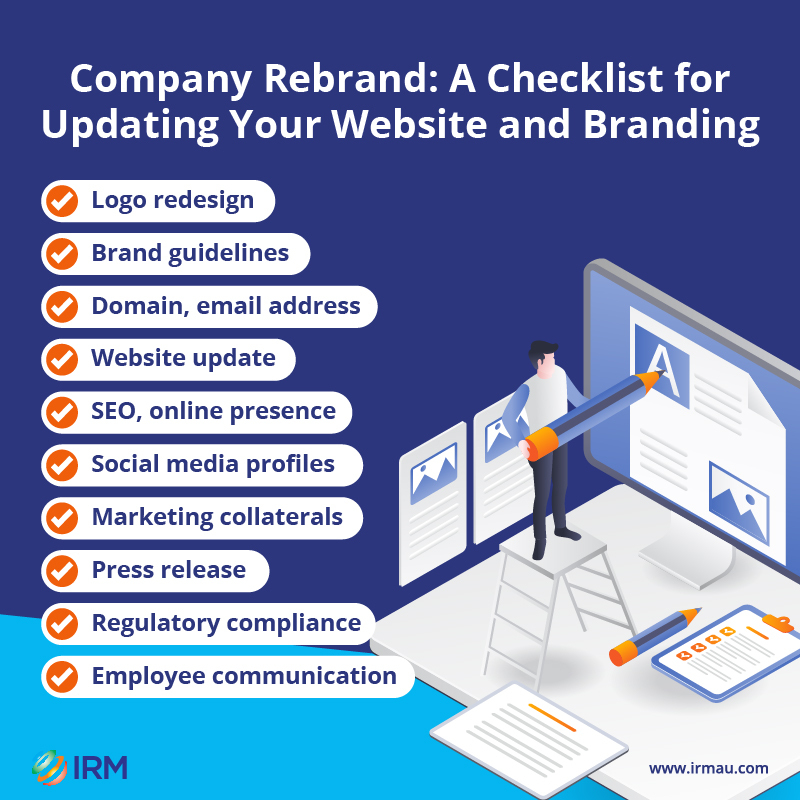
- Beyond logo redesign, company rebranding includes creating your brand guidelines as well as your new domain and email address.
- Updating your website, SEO, social media profiles, and marketing collaterals are covered in the process too.
- Don't forget to do your press release, legal and regulatory compliance, employee training, and investor notification.
Embracing change and staying relevant are vital aspects of any successful business journey. As the market evolves and consumer preferences shift, ASX-listed companies often find themselves at a crossroads, contemplating the need for a significant transformation - a process known as rebranding.
Rebranding goes beyond merely updating a logo. It involves realigning the company's identity, values, and goals to resonate with its target audience. A well-executed rebranding can breathe new life into a business, attracting fresh opportunities and solidifying its position in the market.

However, undertaking such an endeavour requires careful consideration and a strategic approach, especially when it comes to the company's online presence. Here’s an essential checklist of activities to consider when embarking on a rebranding expedition:
1. Logo redesign
Your company's logo is the visual representation of your brand. In this first step of rebranding, engage the expertise of a professional designer to craft a new logo that perfectly captures the essence of your new brand identity. Ensure the design aligns with your organisation’s goals and values, while being visually appealing and memorable.
2. Brand guidelines
To maintain a cohesive brand presence across all communication channels, develop comprehensive brand guidelines. These guidelines should encompass specifications for logo usage, colour palettes, font choices, tone of voice, and other visual and written elements. Consistency in branding builds trust and reinforces your brand's message.
3. Domain and email address
As your business takes on a new identity, secure a domain name that reflects the updated company name. A well-chosen domain (e.g., newcompanyname.com) reinforces your rebranding efforts. Additionally, update email addresses to reflect the new domain (e.g., info@newcompanyname.com) for a professional and unified appearance.
 Craft guidelines for your new brand.
Craft guidelines for your new brand.
4. Website update
Your corporate site is a critical touchpoint for customers and investors. Make sure to update it with the new company name, logo, and tagline, consistently reflecting the new brand identity throughout all pages. Review and align the website content with the rebranding, ensuring seamless functionality and a seamless user experience.
5. SEO and online presence
Maintain your online visibility and rankings through search engine optimisation (SEO) best practices on the updated website. Implement keyword optimisation and relevant meta tags to help search engines understand your new branding. Additionally, update online directories, listings, and citations to reflect the new company name and ensure accurate information across the web.
6. Social media profiles
Social networking sites are effective venues for connecting with your audience. Update your company's name, logo, and profile information consistently across all social media profiles. This unified branding fosters recognition and reinforces your brand's message.
 Update your website to reflect your new brand.
Update your website to reflect your new brand.
7. Marketing collaterals
Elevate your marketing materials with fresh designs that incorporate the new branding elements. Redesign brochures, flyers, and business cards to align with the updated brand messaging. Reprinting these materials ensures a consistent and professional representation of your rebranded company.
8. Press release and communication
A successful rebranding requires effective communication. Draft a compelling press release to inform stakeholders and the public about the rebranding initiative. Ensure all communication channels, including your website, social media, and email newsletters, are updated to inform clients, partners, and investors about the changes.
9. Legal and regulatory compliance
Rebranding involves legal considerations. Consult with legal professionals to ensure compliance throughout the process. This includes obtaining necessary approvals, such as ASIC approval, and updating relevant legal documentation to reflect the new branding.
 Communicate your new brand to employees, customers and investors.
Communicate your new brand to employees, customers and investors.
10. Employee communication and training
Your employees are essential ambassadors of your rebranded company. Effectively communicate the rebranding initiative to your team, sharing the rationale behind it. Provide comprehensive training on the updated brand guidelines to empower employees to represent the new brand consistently.
11. Customer and investor notification
Engage with existing customers, investors, and partners during the rebranding transition. Proactively notify them about the changes and address any concerns or questions they may have. Open communication builds trust and strengthens relationships during this transformative phase.
The low-down
Remember that this list serves as a general guideline, and the specific requirements of your rebranding process may vary based on your industry, target audience, and company goals. It's always recommended to consult with professionals in branding, design, and legal matters to ensure a successful rebranding transition.
Make your next website a winner
Moving to a new site following your company rebrand? Try IRM, the go-to source of many ASX-listed companies for their investor websites and news delivery.
Connect with us on +61 2 8705 5444 or clientrelations@irmau.com to get started today.
